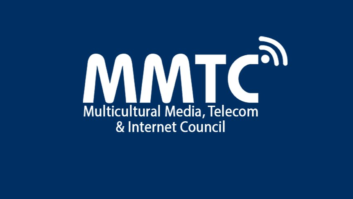This article has been amended with additional information and input.
The Federal Aviation Administration has issued new rules for determining the proper way to light and mark obstructions — including towers — that affect navigable airspace.
A new FAA Advisory Circular released on Dec. 4 sets new standards for marking and lighting obstructions that have been deemed to be a hazard to navigable airspace. This advisory — referred to in FAA parlance as Advisory Circular 70/7460-1L — goes into effect immediately and replaces an earlier AC that offered guidance on obstruction lighting and marking.
Keep in mind that this AC is not a regulation and, in general, is not mandatory. However, an owner proposing construction or alteration of a structure that may affect the National Airspace System is required to notify the FAA by completing a notice of proposed construction or alteration form.
Key changes in this new AC include new height, lighting and marking standards.
Specifically, the height of a structure identified as an obstruction — a radio tower may fall in this category — a has been lowered (ever so slightly) from 500 feet above ground level (AGL) to 499 feet AGL. According to the AC, all structures that are above 499 feet AGL are now considered obstructions and the FAA will study them to determine their effect on the navigable airspace. “This will ensure that all usable airspace at and above 500 feet AGL is addressed during an aeronautical study and that this airspace is protected from obstructions that may create a hazard to air navigation,” the FAA said in its report.
The AC also attempts to increase the conspicuity of certain towers, particularly for low-level agricultural flight operations. The AC sets new standards for voluntary marking of meteorological evaluation towers that are less than 200 feet AGL. These standards address lighting and marking of the tower and associated guy wires, the FAA report said.
The AC also added a new chapter on Aircraft Detection Lighting Systems with performance standards for these types of systems; added new lighting and marking standards to reduce impact on migratory bird populations; and authorized the use of medium-intensity white and medium-intensity dual-obstruction lights on towers up to and including 700 feet AGL.
The biggest benefit from the revised FAA rules is the ability to use medium-intensity white strobe lighting on structures up to 700 feet, said Jack Mullaney of Mullaney engineering, a consulting engineering service. “The old limit was 500 feet, which then required the more expensive high-intensity white strobes,” he said. “Many owners have elected to use the white strobes during day time hours, since it eliminates the need to paint the tower with alternating orange-white bands.”
Mullaney also noted that the new rules formally eliminate the use of steady-burning red lights at night. Studies purportedly show that migratory birds become fixated on a steady burning light, he said, thus causing the birds to fly into the tower. “Prior to this, for the past several years, tower proposals greater than 450 feet were required to ask for a waiver to eliminate the need for steady-burning lights at night in order to obtain environmental approval,” he said.
The other changes made by in this FAA update should have minimal impact on tower proposals, he added.
One new standard is delayed, however: the FAA is setting new guidelines on flashing lights for structures exceeding 151 feet (but not more than 350 feet), in which two or more flashing lights (known as L-810 lights) should be mounted at diagonally opposite positions of intermediate levels. But this requirement has a delayed effective date until Sept. 15, 2016.
The complete AC can be found on the FAA’s website.












